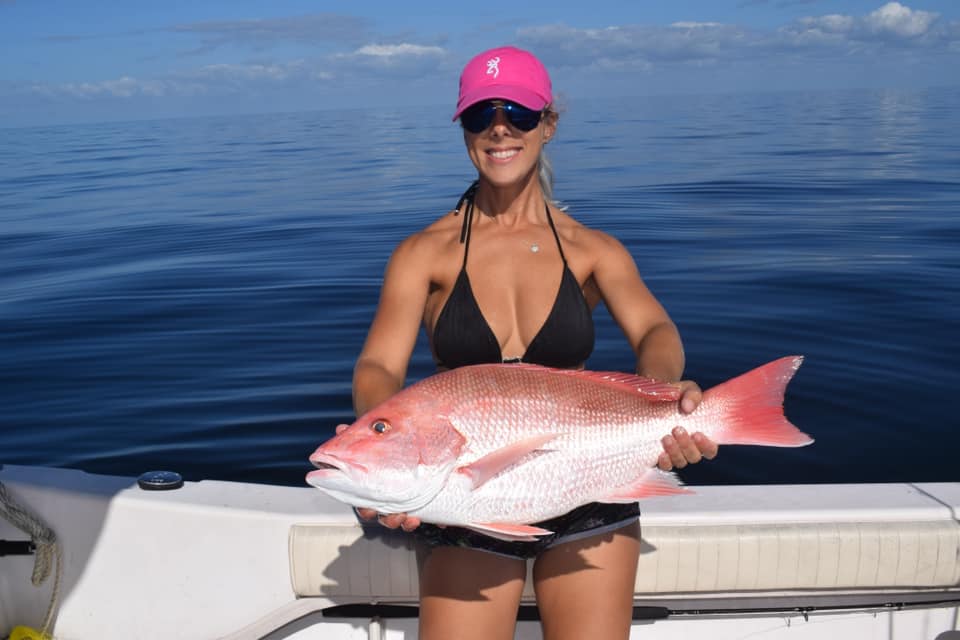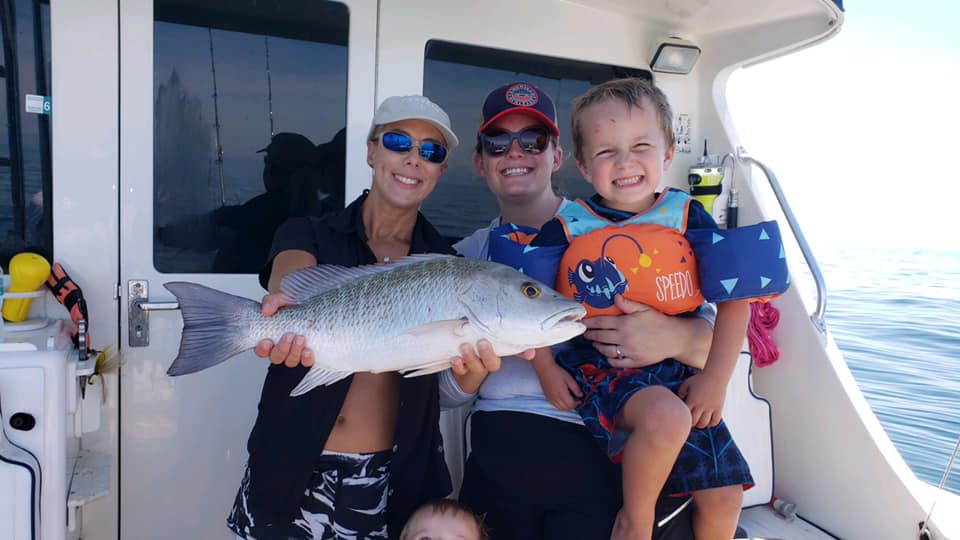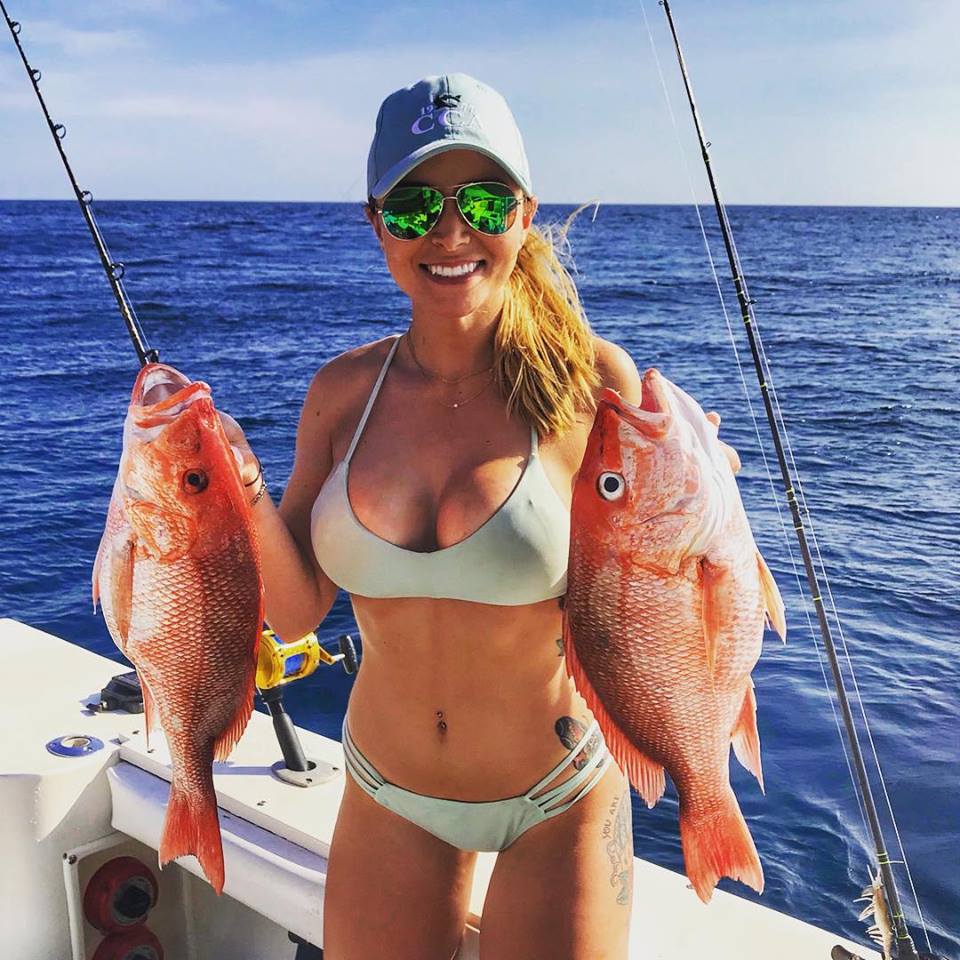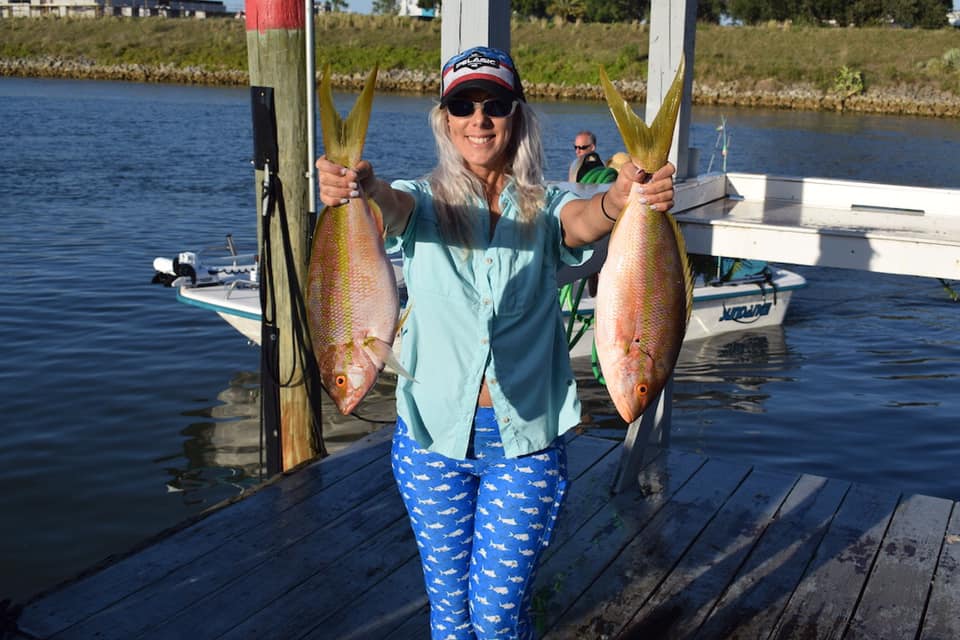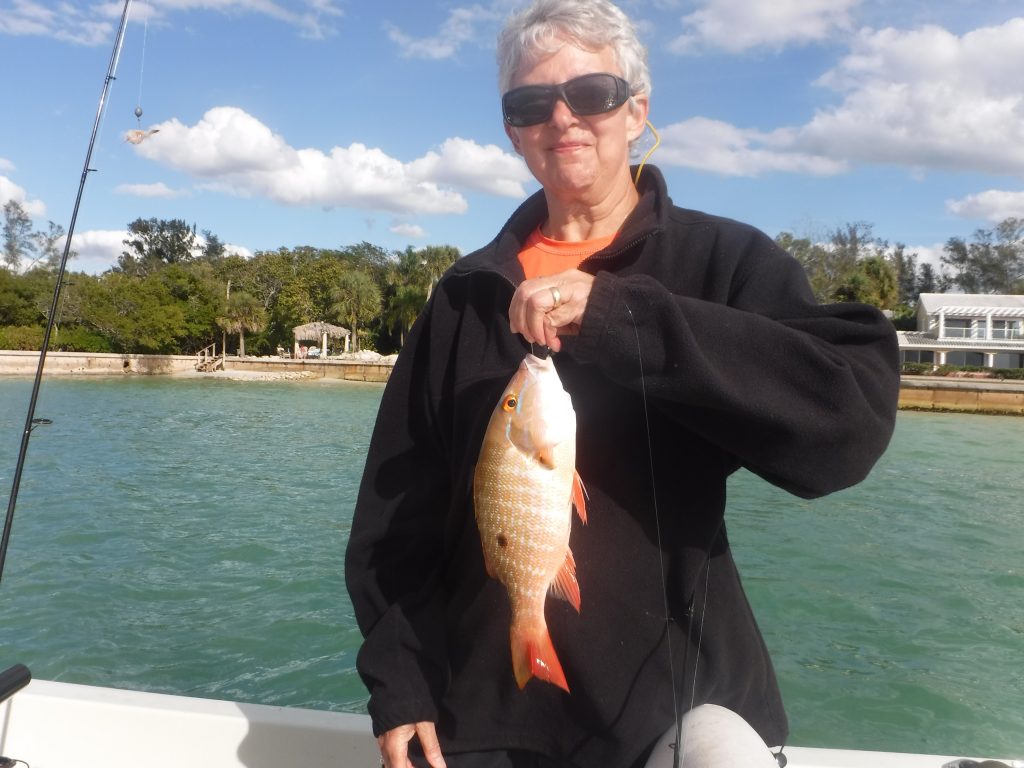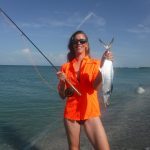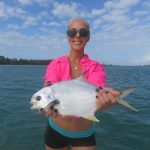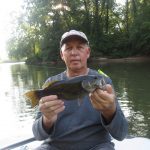Snapper fishing – a Complete Guide
Many saltwater anglers enjoy snapper fishing. There are quite a few different snapper species, most of them living in fairly warm water. All of them are terrific eating!
Snapper are a structure oriented fish that are almost always found around some type of cover, either man-made or natural. Most snapper are found in a very salty, marine environment. A few of the inshore snapper species can tolerate slightly brackish water. Snapper are found in subtropical and tropical waters.
There are many different snapper species, over 100 in fact. For the purposes of this article, the snapper species covered will be limited to those available to anglers sport fishing in the United States and the Caribbean. Since most snapper species have similar habits, generic snapper fishing tips will be covered first, followed by each individual snapper species.
Snapper fishing – best tackle
Snapper fishing tackle runs the gamut. The tackle used to catch snapper really depends on the species being targeted and the depth of the water being fished. Anglers fishing inshore waters and shallow waters close to shore will do fine with the same light spinning tackle used for other inshore species. A 7 foot medium action rod with a 3000 series reel is a good all-around combination.
Anglers fishing for larger snapper or in deeper water will do best with conventional gear. Since casting is usually not required, conventional gear becomes more appropriate. Conventional reels offer anglers more power as the line does not turn 90° when coming on the spool as with spinning tackle. Conventional reels are basically a winch.
Anglers can click these links to shop Amazon for Penn spinning and conventional outfits
Again, the tackle should be matched to the size of the fish being sought and the water being fished. Anglers fishing natural ledges for fish and the 5 to 10 pound range will do fine with a 30 series conventional outfit. However, those fishing for larger snapper species around heavy cover such as oil rigs or artificial reefs will need to bump it up to 40 series tackle.
Snapper fishing rigs
There are several different rigs that anglers use when snapper fishing. The most commonly used rig is the sliding sinker rig, also known as a Carolina rig. A sinker, usually an egg sinker, is threaded onto the running line. A swivel is then tied onto the end. The swivel stops the sinker from sliding while adding a device to attach the leader. A leader is then tied onto the other end of the swivel followed by a hook.
This rig is popular and effective for several reasons. It allows a snapper or other bottom fish to pick the bait up and move off a bit without feeling the weight of the sinker. Also, depending on the length of the leader, it allows the bait to move about in the current naturally. In shallow water leaders are often 3 to 5 feet long. When fishing very deep water, anglers will often go to a leader as long as 50 feet.
Snapper fishing knocker rig video
A knocker rig is a variation of the Carolina rig that is mostly used in fairly shallow water. It is very simple and if the hook is snagged and lost, a new rig is easily tied. It simply consists of an egg sinker with the line threaded through it followed by a hook. The sinker rest right on the eye of the hook. This rig keeps the bait right on the bottom where snapper often feed. The sinker can also be used when the hook snags by jerking the rod tip sharply and letting the sinker slide down and knock the hook loose. That is how the rig got its name.
More snapper fishing rigs
The high low rig or chicken rig is a very simple bottom fishing rig that has been around a long time. It is effective for anglers snapper fishing as well as for just about any other type of bottom fish. It consists of a weight at the bottom followed by hooks tied onto the main line at various intervals. Two hooks are most often used, one located near the bottom and the other a foot or two above.
This rig works very well when drifting. A bank sinker is most often used which will usually bounce over rocks and other obstructions. It also presents multiple baits at multiple levels, increasing the odds of catching a fish. Anglers can buy pre-rigged versions with wire arms or simply tie their own.
Another simple and easy way to present a live or cut bait and snapper fishing is to use a jig head or buck tail jig. A jig head is basically a hook with lead molded near the eye. The result is a device has the hook and weight all in one tidy little unit. This works well on a variety of other bottom species.
The final rig is a simple free line rig. This is used when snapper, often times yellowtail or mangrove snapper, rise up off the bottom in the chum slick. Anglers can tie the hook right to the running line or use a section of leader. The bait is hooked on and floated back in the chum where it drifts naturally with the chum. A split shot or two can be added if needed.
Leaders for snapper fishing
Snapper have keen eyesight and are often found in quite clear water in Florida and the Caribbean. For these reasons, leaders can be crucial to success. Anglers will often have a leader which tests lighter than the main running line. For example, a light conventional rig spooled up with 30 pound line may require the angler going down to 10 pound or 12 pound fluorocarbon leader in order to get a bite.
It is best to start out with a normal strength leader then go lighter if required. There is no reason to use a lighter leader than necessary, especially when fishing around structure. The result will be more fish lost. Anglers fishing between 30 feet deep and 80 feet deep will do fine with a leader that is 3 feet long to 5 feet long. When fishing deeper water, longer leaders are often used. However, this can become cumbersome as once the sinker reaches the rod tip, the snapper will have to be hand lined in the rest of the way.
Hooks for snapper fishing
Hooks are pretty much a matter of personal choice. Many anglers have gone to circle hooks as they reduce fish mortality. Once anglers learn to just reel and slowly lift the rod tip as opposed to setting the hook, there hookup ratio will be as good as when using “J” hooks. Some bodies of water require the use of circle hooks, including the Gulf of Mexico.
Anglers often make the mistake of using too large a hook when snapper fishing. As mentioned above, they have keen eyesight and their mouth is not overly large in proportion to their body. A #1 short shank light wire “J” hook or #2/0 circle hook is a good all-around choice when fishing for snapper up to a few pounds. Anglers can go up in size from their as needed to match the conditions.
Best baits for snapper fishing
Snapper will occasionally take artificial lures. However, the vast majority of anglers snapper fishing use live or cut bait. Live bait is generally preferred when fishing shallow inshore waters, particularly for mangrove snapper. Live shrimp are a top bait anywhere that snapper are found. Small live bait fish such as hearing, sardines, inch pin fish are also very effective baits.
Live bait certainly produce offshore as well. For the most part, anglers fishing and deep water use live bait fish. Shrimp can be a bit more difficult to use as the smaller bottom fish will pick it to pieces. Just about any bait fish that is found in the local waters will work fine as bait. Small pin fish are easily caught inshore and are hardy baits for snapper fishing.
Many anglers snapper fishing use cut bait. This is a simple as cutting a strip or chunk of a fish in using it for bait. Fresh caught bait fish are usually better than frozen. Anglers can fillet the fish and cut it into strips which offers a realistic presentation. However, strip baits are not as durable. Anglers can cut through the body of a bait fish and hook it under the dorsal fin. Using a “plug” in this manner works well and the bait stays on the hook longer. Squid, octopus, and other marine animals can be used as cut bait as well.
Mangrove snapper
Mangrove snapper, also known as “gray snapper”, “mangs”, “black snapper (in the northern Gulf) and grovers”, are the most abundant of the snapper species found in the United States. There also by far the most plentiful available to anglers fishing inshore waters. Mangrove snapper can be found around any type of man-made structure such as bridges, piers, docks, rip-rap, jetties, and artificial reefs. They will also be found on the open grass flats, along mangrove shorelines, and all-natural ledges.
Anglers targeting mangrove snapper in the inshore waters do so using several techniques. Anchoring and bottom fishing with live or cut bait around bridges and other man-made structures is probably the most popular and productive method. A Carolina rig or knocker rig is the best choice. Snapper are nocturnal so this type of fishing works well at night.
Mangrove snapper can also be caught on the open flats. They will often relate to submerged grass as this is where the forage is found. Chumming can be extremely productive in this situation, using either live or frozen chum. Live bait chumming is an effective technique where anglers use handfuls of live bait fish, usually scaled sardines, to get the fish excited and up behind the boat. A frozen block of chum can be used as well. A free line rig works best in this application.
Mangrove snapper are certainly found offshore as well. In fact, this is were anglers will encounter the largest of the species. Oil rigs produce some very large snapper off of the Louisiana coast. Artificial reefs and natural ledges along with wrecks are prime spots when offshore fishing for snapper. Live or cut baits can be used.
Anglers usually anchor over smaller isolated ledges and reefs while drifting the larger pieces of cover. The same goes for anglers fishing in deep water, drifting is usually best. However, modern GPS trolling motors have revolutionized bottom fishing. Many use these sophisticated electric motors to keep the boat precisely positioned in a spot. It also allows them to jag slightly to cover a another little piece of the structure.
Red snapper
Red snapper, also known as “American reds” are an extremely popular snapper species. They are a beautiful fish which taste great and grow quite large. The world record is 50 pounds! Red snapper are seldom found inshore and are usually caught in water 100 feet or deeper, though they will move shallower than that at times.
Locating red snapper is usually the most difficult part. Once found, it is usually not difficult to get them to bite. A chicken rig with two pieces of cut bait will usually produce red snapper and it is an easy rig to fish. Cut bait is generally productive, though there are times when anglers will have to go to live bait. Red snapper are not notoriously leader shy.
Red snapper are usually found in fairly large schools. This makes them easy to mark with bottom machines over structure. They also seem to prefer the larger ledges and breaks. Red snapper are highly regulated with short fishing seasons. Anglers need to be aware of the harvest regulations, equipment regulations, and in some cases release regulations.
Yellowtail snapper
Yellow tail snapper are a staple fish for charter boat captains in the Florida Keys. They are a beautiful fish that fight hard and taste great. They are quite abundant and also fairly reliable on many of the patch reefs and other shallow water structures off of Florida. This makes them very popular among recreational and charter boat anglers. They are not large, 4 pounds is a nice fish. Large yellowtail snapper are called “flags”.
Most anglers who are serious about yellowtail snapper fishing do so by chumming. They respond very well to this and will come up off of the bottom to feed. Anglers can buy frozen blocks of chum while some serious yellowtail snapper experts makes up their own using sand and other components.
Yellowtail snapper can be line shy and difficult to catch at times. The best approach is to usually free line a small cut bait back in the chum slick. Spinning tackle works very well for this. Anglers will manually pull line off of the spool to ensure a natural drift of the bait. They are caught by bottom fishing as well, especially from drifting boats.
Lane snapper
Lane snapper are a small member of the snapper family. They may be the best of all of them on a dinner plate. They are caught by anglers bottom fishing over natural ledges, coral reefs, and hard bottom areas. They are found from North Carolina south and in the Gulf of Mexico. Lane snapper are caught fairly shallow, though they do not come inshore very often in decent numbers.
Lane snapper are fairly easy to catch, relatively speaking. A simple chicken rig with shrimp or cut bait works fine. They are fairly aggressive and certainly less finicky than other members of the snapper clan. In fact, they are seldom targeted but are happily encountered when fishing for other bottom dwelling species.
Mutton snapper
Mutton snapper are another snapper species that lives in deeper waters for the most part. Juvenile mutton snapper can be caught inshore and in passes and inlets. They can be fussy at times and will hit live and cut bait. Drifting wrecke and reefs is usually productive.
Larger mutton snapper tend to be more solitary; they do not school as other snapper species do. They grow fairly large, with the world record being 34 pounds. Mutton snapper range pretty far north, up to New England, but most are caught in the Florida Keys and Caribbean.
Vermillion snapper
Vermillion snapper, also known as “beeliners” are a smaller snapper species. They are fairly widely distributed, being found in the Gulf of Mexico and Atlantic from North Carolina south. They school up in large numbers and once located, a bunch can be caught. They are small, but beautiful, put up a nice tussle and are fantastic eating. They will hit just about any cut bait.
Schoolmaster snapper
Schoolmaster snapper are a smaller species that are not as numerous as some of the other snapper species. That are normally found in South Florida and the Caribbean. They are usually found in fairly shallow water over coral reefs. Schoolmaster snapper average a foot or so and like all snappers, fight hard and taste great.
Cubera snapper
Cubera snapper are the largest of the snapper species, reaching weights exceeding 100 pounds. They are found from Florida south, usually in the Atlantic Ocean and Caribbean. Cubera snapper can also be caught in some rivers in Central America. They will hit artificial lures and are caught by anglers trolling. Serious anglers use heavy tackle and large live baits. A whole lobster will catch a trophy cubera snapper!
In conclusion, this article on how to catch snapper will help anglers identify, but more importantly, catch more of these tasty saltwater bottom fish!
